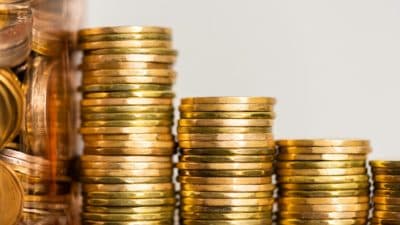Ultimately, self-directed investors need to be comfortable about the stocks they hold. And to be comfortable, investors should at least know what the businesses do and how they make money.
On top of that, investors should be willing to continuously learn and reflect on their actions. It can be dangerous to invest on autopilot, so investors should objectively analyze the results of each investment periodically to see if they are meeting their goals.
Continuous learning
There are many ways for continuous learning. Reading books and articles, talking with people, and taking courses are all good ways to learn. But the most important part of learning is application.
After learning the fundamentals, investors can start practicing in a virtual account. However, virtual accounts only take you so far. Only by investing money in real markets can investors experience excitement, fear, greed, and perhaps pressure.
For example, years ago I started trading Husky Energy Inc. (TSX:HSE) by observing its weekly high and low prices. I was buying low and selling high. Well, that worked a couple of times, but the third time, Husky went below my cost basis. I wasn’t really investing back then, and I was at a loss as to what to do after that. So, back to learning I went!
Critical thinking
Never mind trading. Even with long-term investing, no one knows where the price of a stock will go tomorrow, next week, next month, or next year. Just because a stock goes up after you buy it doesn’t mean you’re right. Likewise, just because a stock goes down after you buy it doesn’t mean you’re wrong either.
For example, some investors might have bought General Motors Company (TSX:GMM.U)(NYSE:GM) at US$36 at 7.5 times its earnings in November last year, thinking that it was an undervalued stock with a good 4% yield. Who knew the shares were going to be around US$31 today at 6.1 times its earnings with an even higher yield of 4.9%?
People can get it wrong, even for a highly followed company such as Microsoft Corporation (NASDAQ:MSFT). After its inevitable fall in the share price from the Internet bubble in 1999, Microsoft traded sideways for many years. It continued sideways even after earnings caught up in 2008. Of course, the financial crisis hit in that year, and Microsoft’s shares fell close to a multiple of nine in early 2009.
Between mid-2010 and 2011, Microsoft’s share price oscillated between a multiple of 9.5 and 11.5. But many investors had lost faith in it then. It wasn’t until late 2013 that Microsoft broke out of its sideways trend and rose, once again proving that a company that grows more valuable over time will eventually be bid up by investors. In fact, Microsoft’s earnings per share increased on average 9.8% per year over the last decade.
Conclusion
A self-directed stock investor should be willing to learn and apply their knowledge. They should think critically and reflect on their actions. Investors should record their goals for each investment, review them periodically to see if those goals are being achieved, and set new goals if they are.







